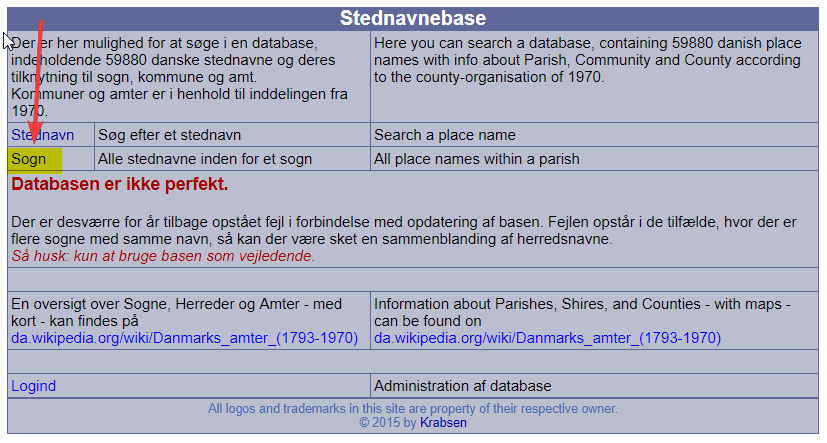In the first two parts of this tutorial series, I supplied the name of the ejerlav (property area), when we needed it to find a lot on a map and in the public information server. My fifth great-grandfather Mads Rasmussen’s farm called Knudstrup lay in Sanderum Parish and I located the family in the 1801 census, but the census did not reveal the name of the ejerlav. In this post, I will demonstrate how to find the name of the ejerlav.
Easy Way to Find the Name of the Ejerlav
I wrote in my last post, that there was no easy way to find the name of the ejerlav, but there actually is a relatively new ressource, which makes it very easy: https://www.danishfamilysearch.com/gader/ (DFS). This website is available in English - some text here and there has not been translated, but the page is easy to navigate. You may already know the site for its index to church, census and other records. Go to the site and choose the menu item Search -> Search streets and places.
Fill in Street/Place Name, County, Hundred, Parish, in this case Kundstrup - Odense - Odense - Sanderum. The search will provide one result only. Click the magnifying glass to the far left to see all the details about the place. The result currently produces the details shown below. The name of the ejerlav is right there in the details, so that was easy.

Obsolete Place Names and Variant Spellings
The contents of this website are known to be made by its users, so I asked one of them about the source of the data in this place name database. Most of the details have been retrieved directly from a database maintained by the Danish Geodata Agency. It contains all place names, which are officially acknowledged today. In addition to that, the users of the DFS website are continually typing in obsolete place names.
Because the DFS database does not contain all obsolete place names, your search may not produce any results. If so, replace the ending with the wildcard % to broaden your search. Alternatively, try finding the correct spelling by looking up the parish at the Danish Wikipedia site, as explained in part one, or in Krabsen’s place name database at http://www.krabsen.dk/stednavnebase/ At Krabsen's site, you click the link named Sogn (parish) and search for the parish. This will show a list of all place names within that parish. Then you can find today’s spelling, which must be used to find the place in DFS’ database.

Find Another Source to Support Your Conclusion
Many places have the same names in Denmark, so beware of the name of the parish in the search result at DFS. In this case, it says Ravnebjerg Parish, but the census record said Sanderum. The area used to belong to Sanderum Parish, which explains the discrepancy. Anyhow, when you have looked up the name of the ejerlav, I recommend that you always find one more source which confirms the result. For instance, you can find a contemporary map of the ejerlav and check the name of the owner written on the lot or look up the lot in the sogneprotokol (parish hartkorn register, demonstrated in part two) and check the owner’s name there.




